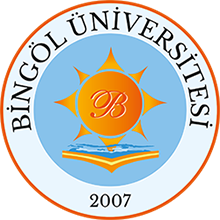Polen Ekstraktıyla Üretilen Kefirlerin Depolama Süresince Kalite Parametrelerinin Belirlenmesi
Özet
ÖZET:
Modern yaşam tarzı ve beslenme alışkanlıklarındaki değişiklikler, insan sağlığını
olumsuz yönde etkilemektedir. Bu nedenle, probiyotik ve biyoaktif madde içeren
fonksiyonel gıdaların önemi giderek artmaktadır. Arı poleni, besin takviyesi olarak
kullanılan, arılar tarafından bitki polenlerinden üretilen bir üründür. Bu bağlamda,
mevcut çalışmada, biyoaktif madde içeriği yüksek kefir elde etmek için, %0,25 (K-025),
%0,5 (K-05) ve %1 (K-1) konsantrasyonda arı poleni ekstraktı içeren ve içermeyen
(Kontrol) dört farklı kefir örneği hazırlanmıştır. Örnekler 4 °C’de 21 gün boyunca
depolanmıştır. İlk olarak, kefir örneklerinin içeriğine eklenecek olan arı poleninin botanik
kaynağı tespit edilmiştir. Kefir örneklerinin depolama süresince 1., 7. 14. ve 21. günlerde,
fizikokimyasal (toplam kuru madde, kül, protein, yağ, titrasyon asitliği, pH, renk) ve
duyusal özellikleri değerlendirilmiş, toplam fenolik içeriği, antioksidan aktivitesi (DPPH•
(2,2-difenil-1-pikrilhidrazil) ve FRAP (Demir (III) İndirgeme Antioksidan Gücü))
saptanmış ve fenolik madde içeriği sıvı kromatografisi-yüksek çözünürlüklü kütle
spektrometrisi (LC-HR MS) cihazı ile belirlenmiştir Aynı zamanda, arı poleninin kefir
örneklerinin mikrobiyal içeriğindeki değişimine etkisini değerlendirmek için toplam
mezofilik aerobik bakteri, latobasil, laktokok, maya ve küf, asetik asit bakteri sayımı
gerçekleştirilmiştir. Mikroskobik analizler sonucunda, kefire eklenen arı poleninin
bifloral (Verbascum sp. ve Hypericum sp.) olduğu belirlenmiştir. Kefire eklenen arı
poleni kefirin fizikokimyasal özelliklerini geliştirmiştir. Duyusal analizler sonucunda, K-
0,25 örneği en çok beğenilen kefir olmuştur. Arı poleni katkılı kefirlerin toplam fenolik
içeriği, DPPH, ve FRAP antioksidan aktivite değerleri sırası ile 62,58±2,5 (Kontrol, 21.
Gün)-123,25±7,2 (K-1 7. Gün) μg GAE/mg, 23,65±1,6 (Kontrol, 1. gün)-78,54±0,8 (K-1,
7. gün) μgTE/g, 31,01±3,1 (Kontrol, 1. gün)-106,80±2,8 (K-1, 7. gün) μgTE/g aralığında
bulunmuştur. En yüksek oranda saptanan fenolik bileşikler benzoik asit, luteolin,
eriodiktiyoldür. Arı poleni ilavesi depolamanın 7. gününe kadar kefir örneklerinin
biyoaktif madde içeriğini ve mikrobiyolojik özelliklerini geliştirmiştir. ABSTRACT:
Changes in modern lifestyle and dietary habits negatively affect human health. Therefore,
the importance of functional foods containing probiotics and bioactive substances is
increasing. Bee pollen, a product produced by bees from plant pollen used as a dietary
supplement, is high in bioactive compounds. In this context, in the current study, four
different kefir samples were prepared with 0.25% (K-025), 0.5% (K-05), and 1% (K-1)
concentrations of bee pollen extract to obtain kefir with high bioactive substance content
and without bee pollen (Control). The samples were stored at 4°C for 21 days. First, the
botanical source of the bee pollen to be added to the kefir samples was determined.
During the storage period of the kefir samples on the 1st, 7th, 14th, and 21st days, their
physicochemical (total dry matter, ash, protein, fat, titratable acidity, pH, color) and
sensory properties were evaluated, total phenolic content, antioxidant activity (DPPH•
(2,2-diphenyl-1-picrylhydrazyl) and FRAP (Ferric Reducing Antioxidant Power)) were
determined, and phenolic compound content was determined by liquid chromatography-
high resolution mass spectrometry (LC-HR MS). At the same time, total mesophilic
aerobic bacteria, lactobacilli, lactococcus, yeast and mold, and acetic acid bacteria counts
were performed to evaluate the effect of bee pollen on the microbial content of kefir
samples. As a result of microscopic analyses, it was determined that the bee pollen added
to kefir was bifloral (Verbascum sp. and Hypericum sp.). The addition of bee pollen to
kefir improved its physicochemical properties. According to sensory analysis, the K-0.25
sample was the most preferred kefir. The total phenolic content, DPPH, and FRAP
antioxidant activity values of bee pollen-added kefirs ranged from 62.58±2.5 (Control,
21st day) to 123.25±7.2 (K-1, 7th day) μg GAE/mg, 23.65±1.6 (Control, 1st day) to
78.54±0.8 (K-1, 7th day) μgTE/g, and 31.01±3.1 (Control, 1st day) to 106.80±2.8 (K-1,
7th day) μgTE/g, respectively. The phenolic compounds detected at the highest levels
were benzoic acid, luteolin, and eriodictyol. Addition of bee pollen improved the
bioactive substance content and microbiological properties of kefir samples until the 7th
day of storage.
Koleksiyonlar
- Arı ve Arı Ürünleri [18]

DSpace@BİNGÖL by Bingöl University Institutional Repository is licensed under a Creative Commons Attribution-NonCommercial-NoDerivs 4.0 Unported License..













